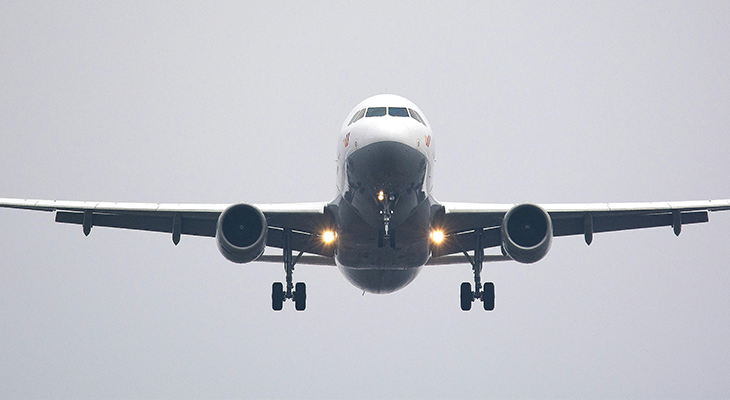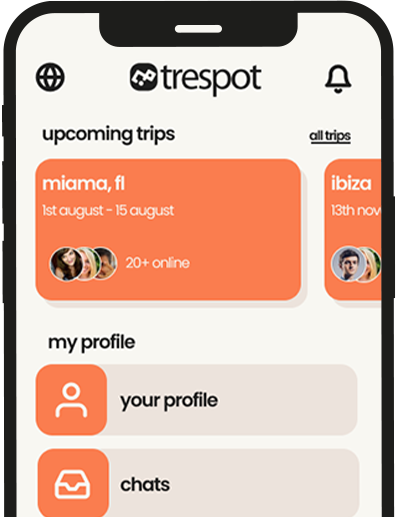Introduction: Why You Need These “Tips for a First Time Flyer”
Airports can feel like a maze of acronyms (TSA, 3‑1‑1, Wh) and strict timelines. The good news: your first time flying doesn’t have to be chaotic. If you know the basics—how early to arrive, how to pack your liquids, why power banks can’t go in checked baggage, and how boarding groups work—you’ll be fine. This guide compiles the most current (2025) tips for a first time flyer to take you from booking to baggage claim with confidence.
1) Pre-Flight Checklist: The 10-Minute Overview
- Match your ticket name to your ID exactly.
- Download your airline’s app and enable notifications.
- Online check‑in ~24 hours before (set a reminder).
- Arrive 2 hours (domestic) / 3 hours (international) before departure.
- Pack liquids per the TSA 3‑1‑1 rule (3.4 oz / 100 ml, 1 quart bag, 1 per passenger).
- Power banks in carry‑on only, terminals protected, label visible.
- Screenshot your boarding pass and gate in case the app fails.
Pro tip: Pre‑download your airport’s terminal map (with food & restrooms marked) for calmer navigation.
2) Documents & ID: REAL ID, Passports, and Names that Match
- Domestic U.S. flights: Bring a compliant REAL ID (or passport, etc.). Check your state’s timeline.
- International: Passport (plus visa/ESTA/eTA if required).
- Exact name match between ID and ticket to prevent check-in issues.
- Minors: Rules vary—verify with your airline and government site.
3) Booking & Seat Selection: Window, Aisle, Over‑Wing (and Why it Matters)
- Window over the wing = smoother ride, often best for motion sickness.
- Aisle = aisle access & faster deplaning, but more bumps from carts.
- Exit rows/bulkheads = extra legroom but with restrictions.
Unique insight: If you’re anxious, choose a seat near a flight attendant jump seat to see crew remain calm during turbulence.
4) Online Check‑In & When to Arrive at the Airport
- Most airlines open online check‑in 24 hours prior.
- Arrive at the airport 2 hours domestic / 3 hours international (TSA guidance).
- If checking bags, add 15–30 minutes, especially during peak season.
- Boarding time ≠ departure time: be at the gate 30–40 minutes before departure.
5) Bags: Carry‑on vs. Checked, TSA’s 3‑1‑1 Liquids Rule, and What Not to Pack
- Carry‑on size differs by airline—double-check policies.
- Liquids: 3.4 oz (100 ml) containers, inside 1 quart bag, 1 per passenger (3‑1‑1 rule). Medically necessary liquids can exceed but must be declared.
- Banned items: knives, certain tools, large aerosols, etc.—use TSA’s “What Can I Bring?” search.
- Checked bag: larger liquids, pocket knives, hiking poles, etc.
Pro tip: Create a small “TSA tray kit” to quickly place liquids, electronics, and wallet into bins, then re-pack calmly.
6) Lithium Batteries & Power Banks: The 2025 Rules You Can’t Ignore
- Carry‑on only for power banks/spare lithium batteries.
- Most airlines allow up to 100 Wh without extra approval (some up to 160 Wh with permission).
- Label must be visible and terminals protected (tape or sleeves).
- Some airlines forbid using power banks during flight—check the policy.
Pro tip: Tape over exposed terminals or store each battery in its own sleeve to prevent short circuits (IATA guidance).
7) Airport Security, Step by Step (So You Don’t Freeze at the Belt)
- Have ID & boarding pass ready.
- Put liquids bag & large electronics in separate bins (unless PreCheck or CT lane directs otherwise).
- Remove shoes, belts, jackets (unless PreCheck).
- Walk through scanner/metal detector.
- Repack calmly—don’t rush and leave items behind.
Bringing baby formula, breast milk, or medical liquids? Declare them; TSA permits “reasonable quantities.”
8) Reading Your Boarding Pass, Boarding Groups & Gate Screens
- Your pass shows: name, flight #, boarding time, gate, seat, boarding group.
- Gate screens/apps update frequently—watch for changes.
- Board by your group/zone (e.g., Southwest uses A/B/C + numbers).
Tip: Don’t toss your BP stub—occasionally you may need it again during irregular ops.
9) At the Gate: Delays, Gate Changes, and Standby
- Set push alerts in the airline app.
- If you’re on standby, follow your position on screens/app.
- Missed a connection? Go directly to the airline desk or message in-app for rebooking.
Unique insight: Before storms, screenshot backup flight options—it can speed up rebooking conversations.
10) Boarding: What Actually Happens (and How to Be Ready)
- Boarding starts ~30–45 minutes before departure.
- Order: pre-board (mobility, infants), elites/priority, then general groups.
- Keep essentials in your personal item (meds, passport, wallet, power bank).
- Stow your carry‑on wheels-first and sit quickly to help on-time departure.
11) In-Flight: Turbulence, Motion Sickness & Ear Pressure Hacks
- Turbulence is normal—aircraft are engineered for it; watch crew demeanor.
- Motion sickness: sit window over wing, look at horizon, avoid heavy meals, ginger/OTC meds can help.
- Ear pressure: swallow, yawn, chew gum, or use pressure‑regulating earplugs (EarPlanes).
Pro tip: Bookmark r/fearofflying—pilots and pros explain turbulence & noises in plain English.
12) Connections 101: Tight Layovers, Terminal Changes, and Re‑Clearing Security
- Domestic → Domestic: usually no re‑screening, just head to next gate.
- International → Domestic (USA): immigration, customs, re-check bags, re‑screen security (plan 2–3 hours).
- Terminal changes may need buses or landside exits—follow signage or ask staff.
Pro tip: Tell the flight attendants if you have a tight connection—they can alert ground staff to help.
13) Arrival & Baggage Claim: Don’t Miss Your Bag (or Customs Signage)
- Follow Baggage Claim signs and match the carousel number to your flight.
- Verify tag numbers before walking off with a bag.
- If lost, report it before leaving the baggage hall.
- International: follow signs to Immigration → Baggage Claim → Customs.
Pro tip: Snap a photo of your suitcase before you fly—easier for airlines to locate if lost.
14) Flying Solo for the First Time: Anxiety & Confidence Scripts
- Script your steps (arrive → kiosk → bag drop → security → gate) to lower anxiety.
- Ask staff anything—this is their normal workday.
- Watch brief airline/TSA walkthrough videos to visualize the flow.
Confidence line to use: “I’m flying for the first time—could you point me to ___?” Most people will gladly help.
15) Accessibility, Kids & Seniors: Extra Help You Can (and Should) Ask For
- Request wheelchair or mobility assistance when booking—free.
- Some airlines offer family boarding (e.g., Southwest: kids ≤6). Ask the gate agent.
- Medication >3.4 oz? Declare it; “reasonable quantities” are allowed.
- Sunflower lanyard / sensory programs exist at many airports—check the airport site.
Quick Takeaways
- Arrive early: 2 hours domestic / 3 hours international.
- Online check‑in ~24 hours before; know your airline’s cutoff.
- Liquids = 3‑1‑1 rule; meds & baby items can exceed but must be declared.
- Power banks in carry‑on only, typically ≤100 Wh.
- Window over the wing helps minimize motion sickness.
- Watch your airline app and gate screens for gate/boarding changes.
Conclusion
Flying for the first time is a chain of predictable steps—check in, arrive early, clear security, find your gate, board by group, and follow the signs on arrival. Once you understand the timelines, packing rules, and boarding flow, the whole process becomes far less mysterious.
Use this as your pre-flight checklist: set alarms for online check‑in, pack your carry‑on with the 3‑1‑1 rule in mind, and choose a seat that fits your comfort level. Ask staff for help, arrive early, and you’ll soon find yourself giving tips for a first time flyer to someone else. Welcome to the window seat club.
FAQs - Tips for a First Time Flyer
Two hours for domestic, three for international (and add buffer if you’re checking bags or flying at peak times).
Liquids must be in 3.4 oz (100 ml) containers, all inside one quart-size bag, with one bag per passenger. Medically necessary liquids can exceed but must be declared.
Yes, but only in your carry‑on, typically ≤100 Wh without airline approval, terminals protected. Many airlines forbid using them in flight.
Choose a window seat over the wing (mid-cabin) for the smoothest ride and visual reference.
Most airlines open online check‑in about 24 hours before departure. Some have cutoffs (e.g., 45 minutes domestic / 90 minutes international).
References
- NerdWallet — 7 Must‑Know Tips for First-Time Flyers
- TSA — What Can I Bring?
- TSA — Liquids 3‑1‑1 Rule
- TSA — Official Travel Tips & “Arrive Early” Guidance
- American Airlines — Check-in and boarding cutoffs
- IATA — Lithium Batteries Guidance
- Reader’s Digest — Best Airplane Seat to Avoid Motion Sickness
- Southwest Airlines — Boarding Process Explained
- Travel + Leisure — First-Time Flying Tips
- The Guardian — Airline battery/fire risk coverage
- Reddit r/fearofflying — Explanations from pilots & pros
We synthesized advice from TSA, IATA, major airlines, and top-ranking travel guides to produce a single, practical first-time flyer playbook.



